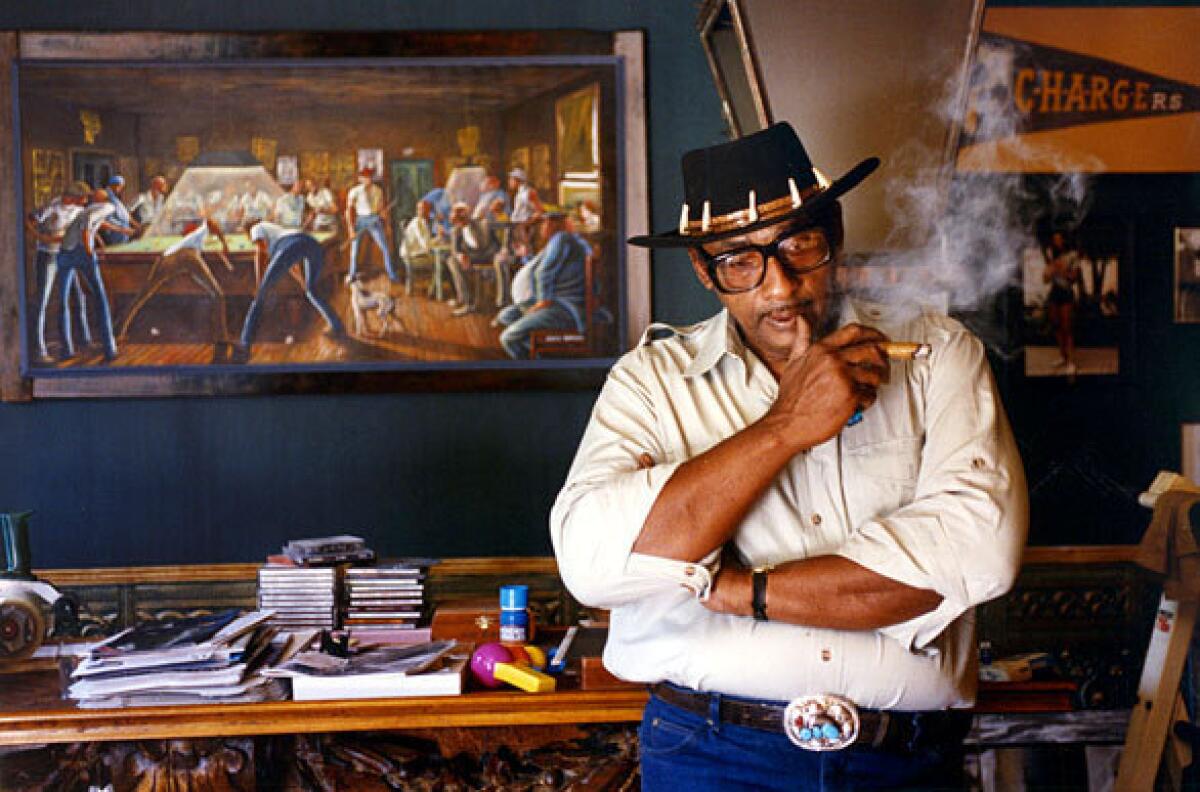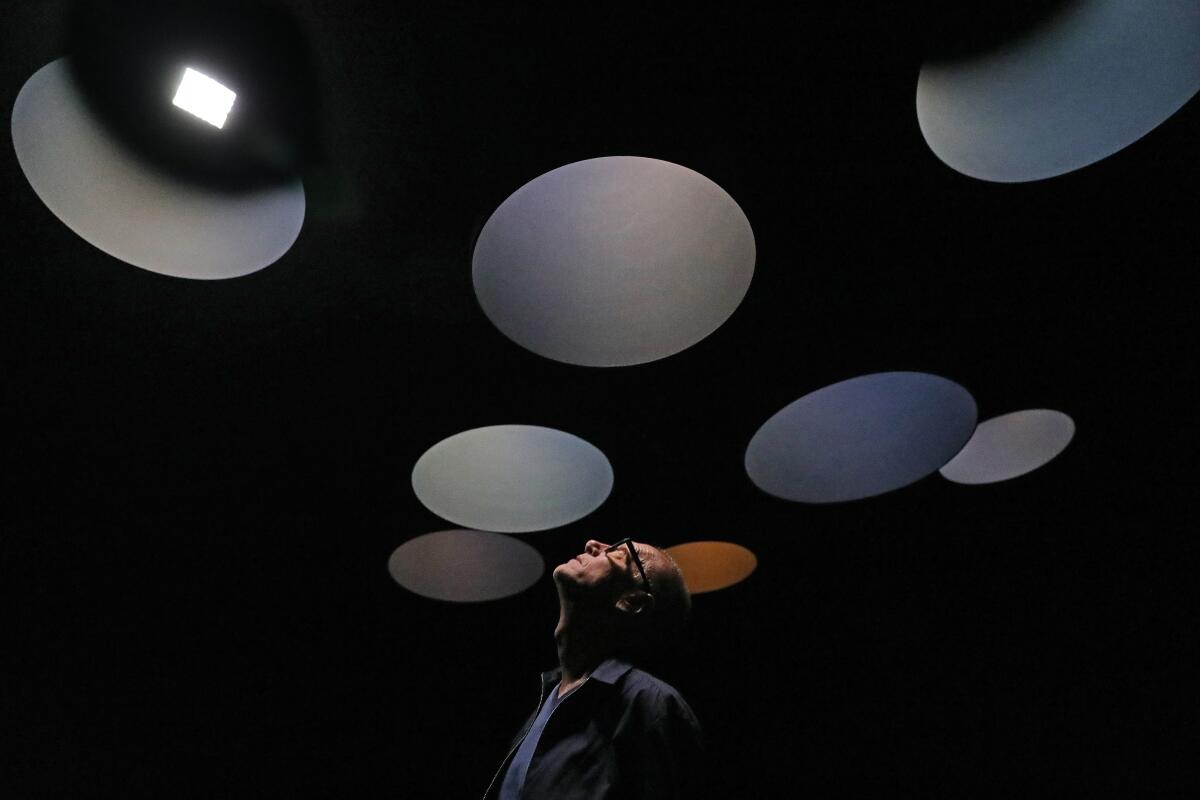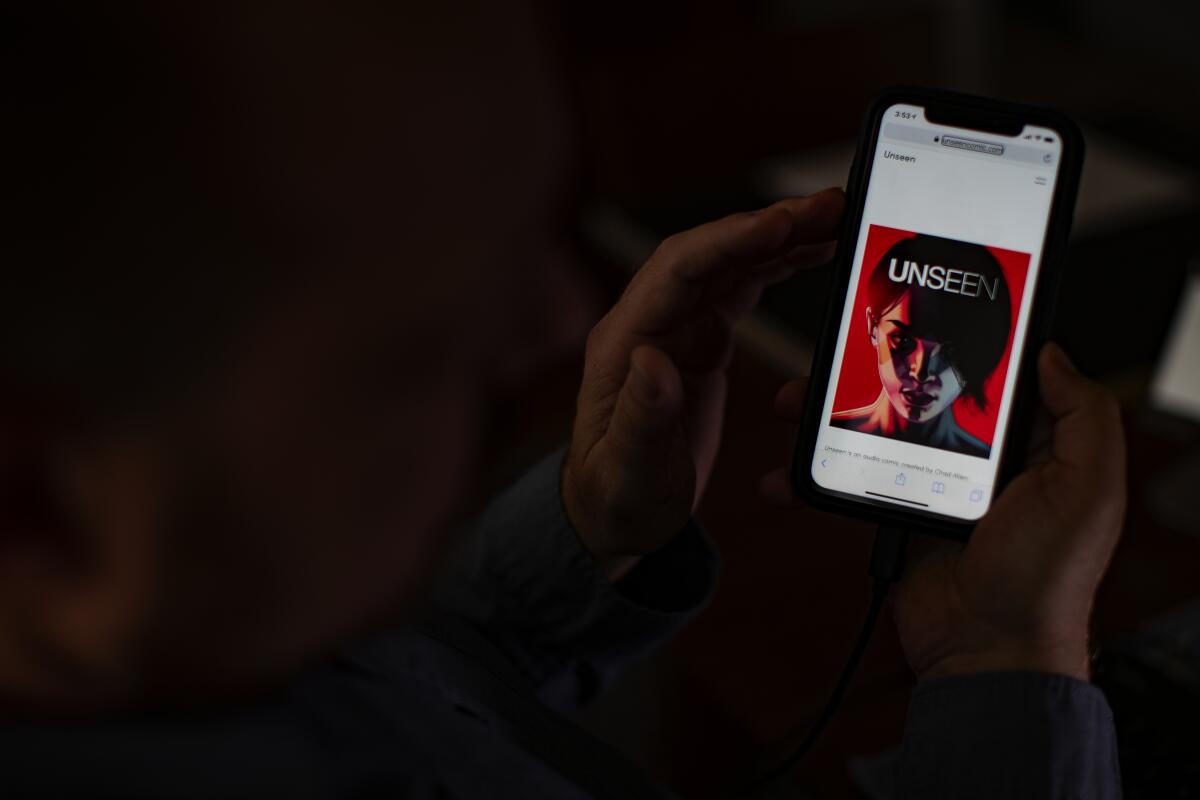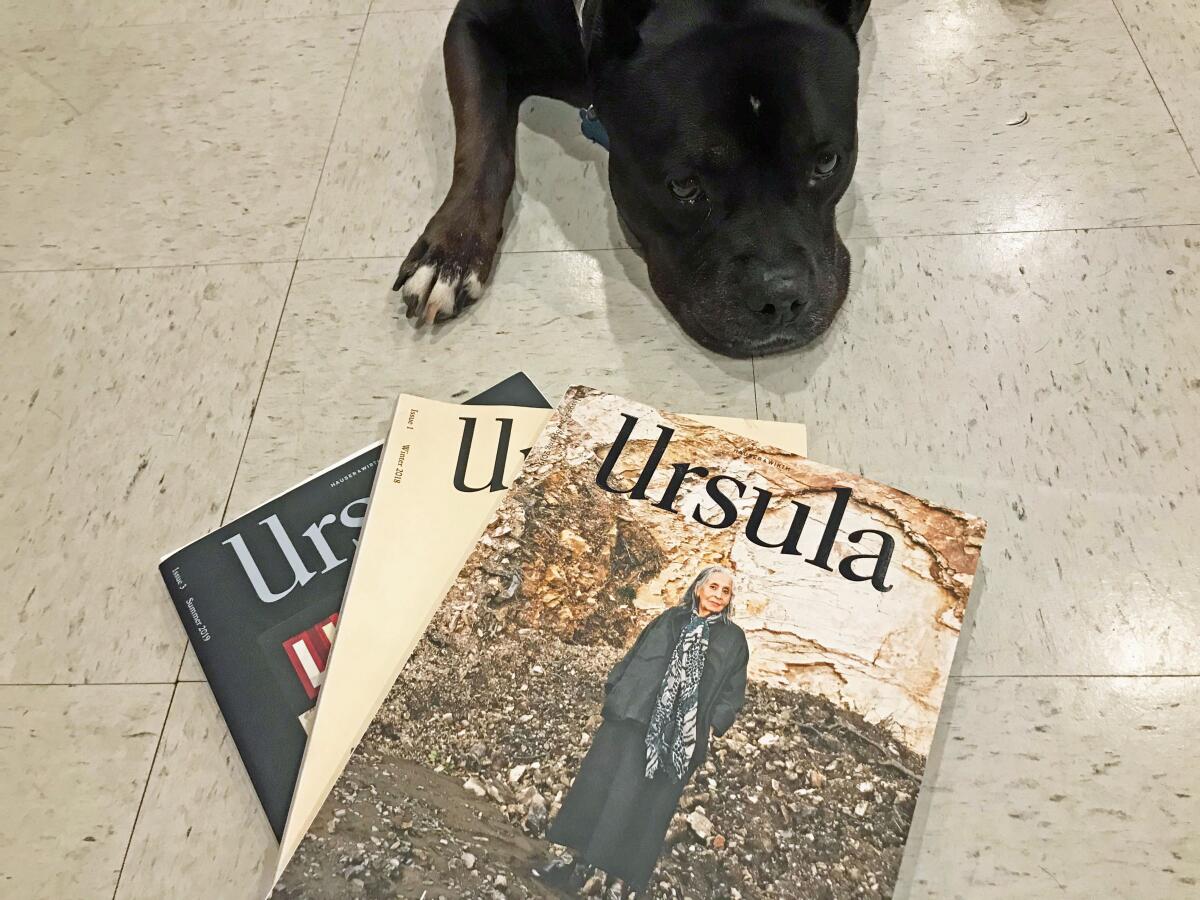Essential Arts: How Ernie Barnes’ painting of a jubilant nightclub became a museum draw

- Share via
Our national three-day extravaganza of barbecues and department store sales to honor American labor is now underway. I’m Carolina A. Miranda, staff writer at the Los Angeles Times, with the week’s art news — and Lizzo-inspired dance.
Star of the show
It was a painting that achieved pop culture status by chance: Singer Marvin Gaye had been hanging out with painter Ernie Barnes when the singer spied the artist’s painting “The Sugar Shack” in his car. Gaye employed the image as the cover of his 1976 album “I Want You”; it later ended up on the ‘70s sitcom “Good Times.” The artist, once a professional football player, is now the subject of a retrospective at L.A.’s California African American Museum. The Times’ Makeda Easter has the story.
Public works
In June, a new master plan process was announced for the La Brea Tar Pits. This week, initial concepts by a trio of architectural teams — Manfredi / Weiss, Dorte Mandrup and Diller Scofidio + Renfro — were unveiled. One plan largely preserves the George C. Page Museum, another lays another story on top, while the last razes the museum and relocates the tar pits’ famous mammoth statues to a new museum building. I round up all the dreamy architectural renderings.
The mammoth sinking into the tar lake as the baby mammoth panics is part of Los Angeles popular culture (see the ‘80s cult flick “Miracle Mile”). For this reason, The Times is seeking your mammoth memories.
William Poundstone makes a case for the mammoths (or some form of them) on his excellent blog, Los Angeles County Museum on Fire: “They function like a war memorial, a retablo, or a 15-second political ad. That is, they present a deepfake drama to reveal a larger truth.”
In other public space news, the Music Center opened its new plaza this week. As part of that, it announced a $12-million gift that will provide free and low-cost public programming in the space.
Events to celebrate the opening — including a concert by the Los Angeles Master Chorale and a splash party for families — are going down through the weekend.
Classical notes
Times classical music critic Mark Swed caught the first public appearance by Plácido Domingo since allegations of sexual harassment against the famed tenor emerged. Domingo received thunderous applause as he took to the stage at the Salzburg Festival. But the real news, says Swed, was the string of great performances by L.A. musicians: James Conlon led a rendition of Verdi’s “Luisa Miller,” Grant Gershon conducted the Los Angeles Master Chorale in director Peter Sellars’s “Lagrime di San Pietro,” and there was Barrie Kosky‘s “outlandish” production of “Orpheus in the Underworld.”
“Whatever housecleaning may wind up being necessary at L.A. Opera, we must not let Domingo be an all-consuming, burn-the-house-down distraction,” he writes. “Instead, we need to set sights on the way forward. A week in Salzburg is all it takes to witness just the kind of greatness, night after night, that is within our reach, whether or not Domingo remains in the picture.”
The 47-year-old Siberian conductor Kirill Petrenko, the subject of much mythologizing, began his tenure at the Berlin Philharmonic this month. Swed heard Petrenko’s work while in Salzburg, where the Berlin Phil performed Beethoven’s Ninth and Schoenberg’s Violin Concerto (with Patricia Kopatchinskaja). “I’m not so sure I buy the mystique business,” he reports, but the show nonetheless “left no doubt about just how special Petrenko is.”
Swed also takes stock of classical music streaming services, including Qobuz, Idagio, Primephonic and iTunes. “Classical streaming is here,” he writes, “and, despite the kinks and quirks, it works.”
In the galleries
Artist Christian Marclay is perhaps best known for his 2010 film “The Clock,” a 24-hour montage that dwells on clocks and the passage of time. In a new show at the Los Angeles County Museum of Art, he has created a series of sound installations that employ Snapchat videos as source material. “The sound of broken iPhone glass, that is interesting,” he tells me. “Scratching ice. I thought, ‘Wow, I could make a symphony out of these.’” Better yet, he makes an organ that visitors can play.

My colleague Deborah Vankin has been making her way through those Instagram-friendly “art” experiences that charge mad $$$ for selfies. The latest: the Museum of Illusions. The experience is “underwhelming,” she writes, but you might pick up a good snap or two in the Upside Down House.
Reinventing comics
Chad Allen, unusual among comic book creators in that he is blind, is helping reinvent the form with a new audio comic book titled “Unseen” that centers on a blind assassin heroine named Afsana. “You don’t see art with your eyes,” he tells The Times’ Jessica Gelt. “You don’t see anything with your eyes. All your eyes do is filter light. You see with your brain.”

On the stage
At Theatre of Note in Hollywood, playwright Jacqueline Wright tackles Oscar Wilde’s “The Picture of Dorian Gray” in her new play “Driving Wilde.” To this morality tale, “director Bart DeLorenzo delivers a briskly paced, well-acted staging that is perhaps most notable for its splendid design elements,” writes F. Kathleen Foley.
Ready for the weekend
I line up the art happenings in my weekly Datebook. But this being a holiday weekend, the pickings are slim. Thankfully my colleague Matt Cooper rounds up seven Labor Day concerts, shows and festivals — including four that are free.
What I’m reading
I’ve been enjoying “Ursula,” the quarterly art magazine published by Hauser & Wirth. Though it’s the product of a highfalutin gallery, the mag is refreshingly free of artspeak and features stories about topics such as a collector of unusual ephemera, the connection (or not) between jazz and art, and the significance of Sister Wendy. I particularly enjoy the interviews, which have included conversations with Ida Applebroog, Luchita Hurtado, Senga Nengudi and Linda Goode Bryant.
All of this has much to do with the mag’s editor, Randy Kennedy, a former arts reporter for the New York Times who knows how to balance smart and readable — and who also knows how to do things like write a western and put away piles of tacos. Respect!

Your support helps us deliver the news on culture — and this newsletter. Subscribe to the Los Angeles Times.
In other news ...
— Fashion designer Isabel Toledo, best known for designing the dress Michelle Obama wore to the 2009 inaugural parade, has died at 59.
— Film archivists are working to save the Afghan movies hidden during years of Taliban rule.
— Filmmaker Richard Linklater is going to spend the next 20 years turning the Stephen Sondheim musical “Merrily We Roll Along,” about a trio of friends who become embittered, into a movie that follows real time.
— The Shed, the new Diller Scofidio + Renfro-designed cultural space in Manhattan’s Hudson Yards, has begun to draw protests over connections between board member Stephen Ross and President Trump.
— The lurid allegations against financier Jeffrey Epstein have raised questions about his relationship to the New York Academy of Art — and its young students.
— ARTnews rounds up Epstein‘s many links to the art world.
— The Getty Research Institute has acquired the photographic archive of Sidney B. Felsen, a founder of the famed WeHo printmaking studio Gemini G.E.L.
— Michael Jang’s photos of California in the ‘70s are terrific.
— The ICA L.A. hopes to become the first fully solar-powered museum.
And last but not least ...
Ballet to Lizzo’s “Truth Hurts” is what you need.
More to Read
The biggest entertainment stories
Get our big stories about Hollywood, film, television, music, arts, culture and more right in your inbox as soon as they publish.
You may occasionally receive promotional content from the Los Angeles Times.











